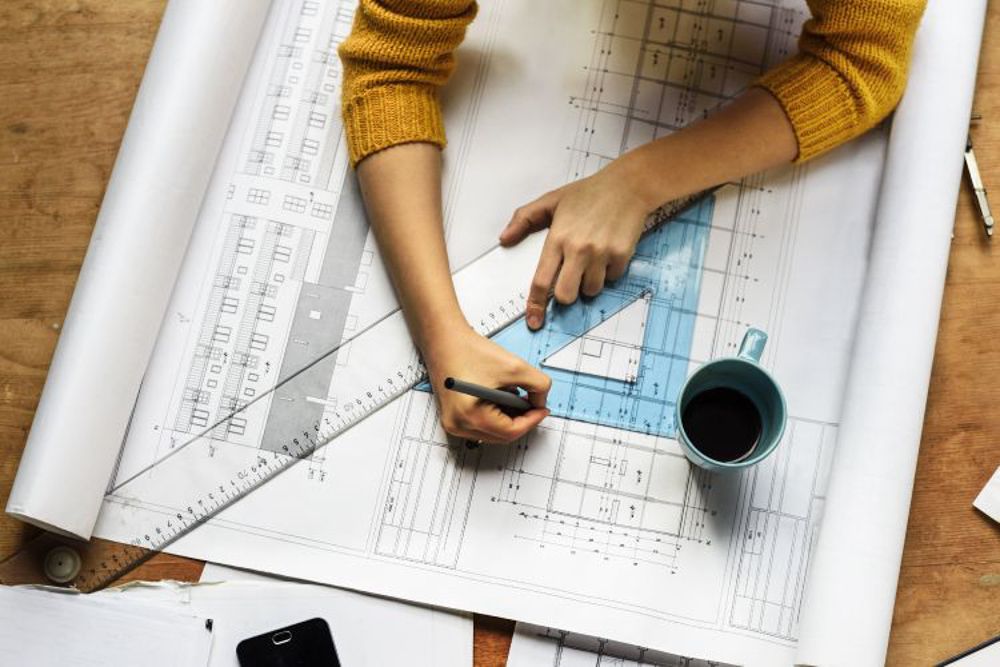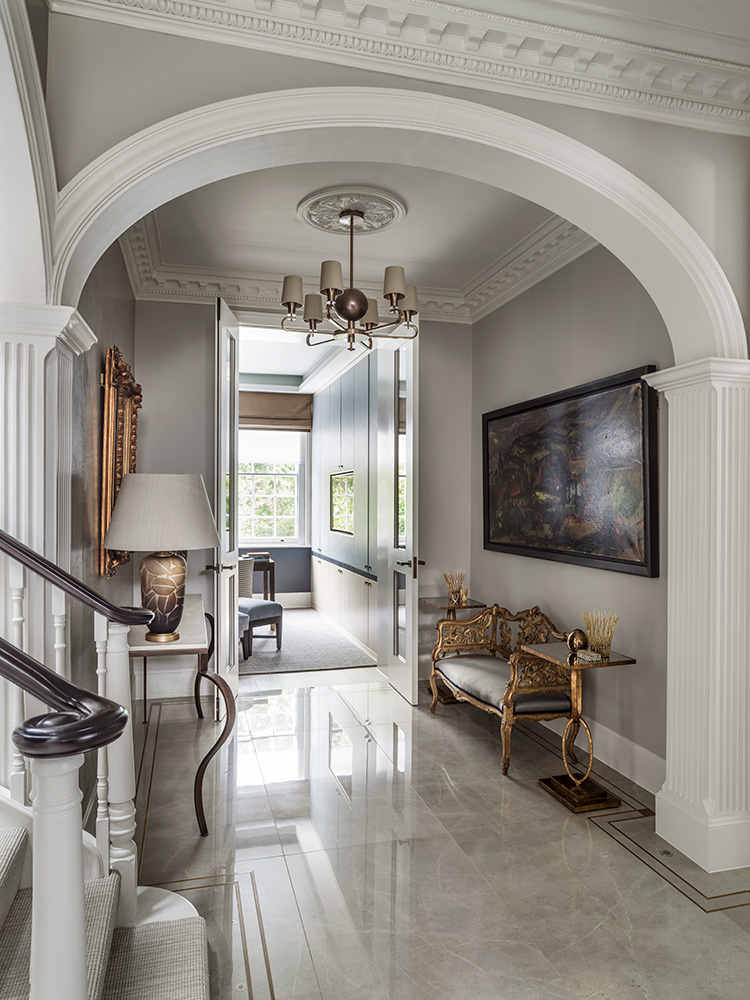Winchester Architect Services to Bring Your Vision to Life
Winchester Architect Services to Bring Your Vision to Life
Blog Article
The Art of Equilibrium: How Interior Design and Home Designer Collaborate for Stunning Outcomes
In the world of home layout, striking an equilibrium in between visual appeals and functionality is no small feat. This fragile stability is accomplished via the harmonious collaboration between indoor developers and designers, each bringing their special know-how to the table. Keep with us as we explore the intricacies of this collective process and its transformative influence on home layout.
Recognizing the Core Distinctions In Between Interior Decoration and Home Architecture
While both Interior Design and home style play necessary duties in creating cosmetically pleasing and practical spaces, they are naturally various self-controls. Home architecture primarily concentrates on the architectural elements of the home, such as building codes, safety and security policies, and the physical construction of the room. It deals with the 'bones' of the framework, dealing with spatial dimensions, load-bearing wall surfaces, and roofing system designs. On the various other hand, Interior Design is a lot more worried with improving the visual and sensory experience within that framework. It includes selecting and setting up furniture, picking color systems, and integrating attractive aspects. While they operate in tandem, their roles, duties, and areas of proficiency deviate considerably in the production of a harmonious home atmosphere.
The Synergy Between Home Design and Inside Layout
The harmony between home style and Interior Design depends on a common vision of design and the improvement of practical visual appeals. When these two fields straighten harmoniously, they can transform a living room from ordinary to extraordinary. This cooperation needs a deeper understanding of each technique's principles and the capability to create a cohesive, cosmetically pleasing environment.
Unifying Layout Vision
Linking the vision for home style and Interior Design can produce a harmonious space that is both practical and aesthetically pleasing. The equilibrium begins with an incorporated attitude; architects and interior designers work together, each bringing their experience. This unison of ideas develops the design vision, a plan that overviews the task. This shared vision is crucial for uniformity throughout the home, guaranteeing a fluid change from outside design to indoor areas. It advertises a collaborating technique where architectural aspects complement Interior Design elements and vice versa. The outcome is a cohesive home that shows the property owner's way of living, personality, and taste. Thus, unifying the design vision is essential in blending architecture and Interior Design for sensational results.
Enhancing Functional Aesthetics
Exactly how does the harmony between home architecture and Interior Design improve useful aesthetics? This synergy makes it possible for the development of rooms that are not just visually appealing but also conveniently useful. Engineers prepared with their architectural design, making certain that the area is reliable and sensible. The interior developer then complements this with very carefully selected components that improve the visual appeals without compromising the functionality. This unified collaboration can lead to homes that are both stunning and liveable. For example, an engineer could create a house with high ceilings and large windows. The indoor designer can then highlight these functions with sheer drapes and high plants, specifically, hence enhancing the aesthetic appeal while preserving the functional advantages of all-natural light and space.
Significance of Collaboration in Creating Balanced Spaces
The cooperation between interior developers and architects is crucial in producing well balanced areas. It brings harmony in between style and style, providing birth to spaces that are not just aesthetically pleasing yet likewise functional. Discovering successful joint techniques can give insights into just how this synergy can be effectively accomplished.
Harmonizing Style and Architecture
Balance, a necessary element of both indoor style and design, can just genuinely be accomplished when these two fields job in consistency. This collective process results in a natural, well balanced layout where every component has a purpose and contributes to the total visual. Integrating layout and style is not just about developing attractive rooms, yet about crafting areas that work seamlessly for their residents.
Effective Collective Methods

Case Researches: Successful Assimilation of Style and Architecture
Examining numerous case researches, it emerges just how the successful integration of Interior Design and architecture can change a room. The Glass Home in Connecticut, renowned for its minimalistic elegance, is one such instance. Architect Philip Johnson and indoor designer Mies van der Rohe teamed up to create an unified balance between the interior and the framework, causing a seamless circulation from the exterior landscape to the inner living quarters. An additional prototype is the Fallingwater Home in Pennsylvania. Architect Frank Lloyd Wright and indoor designer Edgar Kaufmann Jr.'s collective initiatives result Look At This in a stunningly special house that mixes with its all-natural surroundings. These instance researches underline the extensive influence of a successful layout and architecture partnership.

Getting Over Difficulties in Layout and Style Partnership
Despite the obvious benefits of an effective partnership between Interior Design and design, it is not without its difficulties. Interaction problems can occur, as both events may make use of different terms, understandings, and techniques in their work. This can cause misconceptions and delays in task completion. An additional major obstacle is the balancing act of aesthetics and performance. Engineers may focus on structural stability and safety, while developers concentrate on comfort and design. The integration of these goals can be intricate. In addition, budget and timeline restraints typically include pressure, potentially creating breaks in the collaboration. Consequently, effective interaction, common understanding, and compromise are vital to overcome these difficulties and attain a harmonious and successful cooperation.

Future Patterns: The Evolving Partnership Between Home Architects and Inside Designers
As the world of home layout remains to advance, so does the connection in between designers and indoor designers. The fad leans towards a much more joint and integrated strategy, breaking without conventional duties. Architects are no more only concentrated on architectural honesty, however likewise participate in boosting aesthetic charm - Winchester architect. Alternatively, interior designers are welcoming technological aspects, influencing total format and functionality. This progressing symbiosis is driven by improvements in modern technology and the growing demand for areas that are not just aesthetically pleasing yet also useful and lasting. The future assures an extra cohesive, innovative, and adaptive technique to home layout, as engineers and developers continue to blur the lines, promoting a connection that genuinely symbolizes the art of equilibrium.
Conclusion
The art of balance in home design is achieved via the unified cooperation between interior developers and engineers. An understanding of each other's self-controls, efficient interaction, and shared vision are essential in creating visually magnificent, useful, and inviting spaces. Regardless of challenges, this partnership cultivates growth and innovation in layout. As the connection between home engineers and indoor designers advances, it will certainly continue to form future trends, improving comfort, performance, and personal expression in our space.
While both indoor design and home design play important functions in creating cosmetically pleasing and functional areas, they are inherently different techniques.The synergy in between home architecture click here for more info and interior layout lies in a common vision of design and the improvement of practical visual appeals.Merging the vision for home architecture and indoor style can produce a harmonious living room that is both useful and visually pleasing. Hence, unifying the design vision is critical in blending design and indoor layout useful site for spectacular results.
Just how does the synergy in between home architecture and interior style boost functional aesthetic appeals? (Winchester architect)
Report this page